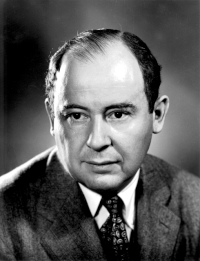
Photo from wikipedia
Switching-constrained optimization problems form a difficult class of mathematical programs since their feasible set is almost disconnected while standard constraint qualifications are likely to fail at several feasible points. That… Click to show full abstract
Switching-constrained optimization problems form a difficult class of mathematical programs since their feasible set is almost disconnected while standard constraint qualifications are likely to fail at several feasible points. That is why the application of standard methods from nonlinear programming does not seem to be promising in order to solve such problems. In this paper, we adapt the relaxation method from Kanzow and Schwartz (SIAM J. Optim., 23(2):770-798, 2013) for the numerical treatment of mathematical programs with complementarity constraints to the setting of switching-constrained optimization. It is shown that the proposed method computes M-stationary points under mild assumptions. Furthermore, we comment on other possible relaxation approaches which can be used to tackle mathematical programs with switching constraints. As it turns out, adapted versions of Scholtes' global relaxation scheme as well as the relaxation scheme of Steffensen and Ulbrich only find W-stationary points of switching-constrained optimization problems in general. Some computational experiments visualize the performance of the proposed relaxation method.
Journal Title: Optimization Methods and Software
Year Published: 2019
Link to full text (if available)
Share on Social Media: Sign Up to like & get
recommendations!